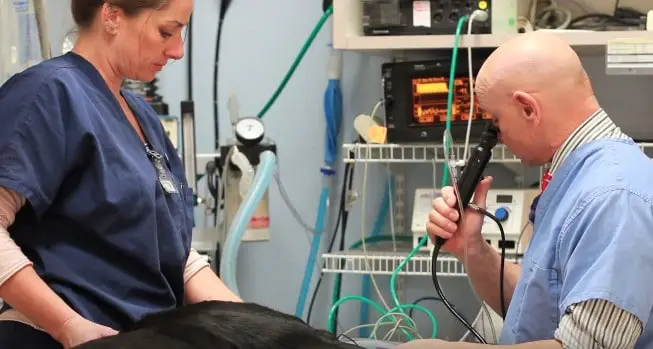Is your pet exhibiting signs of disease indeterminable by typical tests and examinations? Find out if your pet needs an endoscopy, and what it means to undergo this procedure.
Why does my pet need an endoscopy?
An endoscopy is a type of gastrointestinal exam where a small tube is inserted into the pet’s mouth, through the esophagus, and into the stomach. This small tube, called the endoscope, has a built-in camera at the tip, allowing for real-time viewing of your pet’s internal organs and structure. This procedure helps veterinarians and pathologists to see if there are any problem areas that need looking into.
Commonly prescribed to pets showing signs of diarrhea, vomiting, and weight loss, among others, an endoscopy allows vets to see if there are any underlying diseases, tumors, or abscesses in your pet. If your vet sees any abnormalities, they are also able to pass a biopsy instrument to take samples of the specific area.

Through this procedure, your vet may be able to diagnose obscure illnesses that are difficult to pinpoint without seeing your pet’s internal makeup.
What can be diagnosed with a pet endoscopy?
Here is a list of all the abnormalities that can be detected during the process.
- Malignant tumors
- Certain cancers
- Ulcers
- Abscesses or boils
- Internal bleeding
- Blockages
- Blemishes or lacerations
- Strictures
- Inflammation
- Swelling of any part
- Internal injuries or damage caused by trauma
- Swallowed or inhaled foreign objects
Is an endoscopy painful for my pet?
No it is not. During the procedure, your pet will be under general anesthesia so they won’t be able to feel or sense any pain.
Unlike humans, our pets are unable to understand or cooperate during the exam. While some people can undergo this procedure with minimal to no sedation, our animal friends have to be fully sedated to make this process possible.
Rest assured, endoscopy is a non-invasive procedure where surgery is not required. This alone makes for a less complicated and less painful experience for your pet.
How can I prepare my pet for an endoscopy?
Fasting your pet is vital to the accurate examination of your pet’s internal organs during endoscopy.
For stomach examinations, it’s important to withhold all food and water for 12 hours prior to the examination. For the gastrointestinal tract, fasting of 12-18 hours is required to clear it out.
When you’re scheduled to go on a procedure with your pet, your veterinarian will discuss all these requirements to you.
How long before my pet recovers from an endoscopy?
Usually, your pet will have been fully recovered by the time he/she is allowed to go home with you.
If results come out normal, your pet will probably return to being responsive and playful right away. On the other hand, if a biopsy was conducted during the procedure, the actual results may take up to 7 days before your vet and pathologists come back to you for insights. When this happens, your veterinarian will talk to you about options and post-procedure care.
If a foreign object was found and removed, your pet may feel sore and uncomfortable for a short amount of time after waking from anesthesia. After this, your pet will be back to normal in no time.
